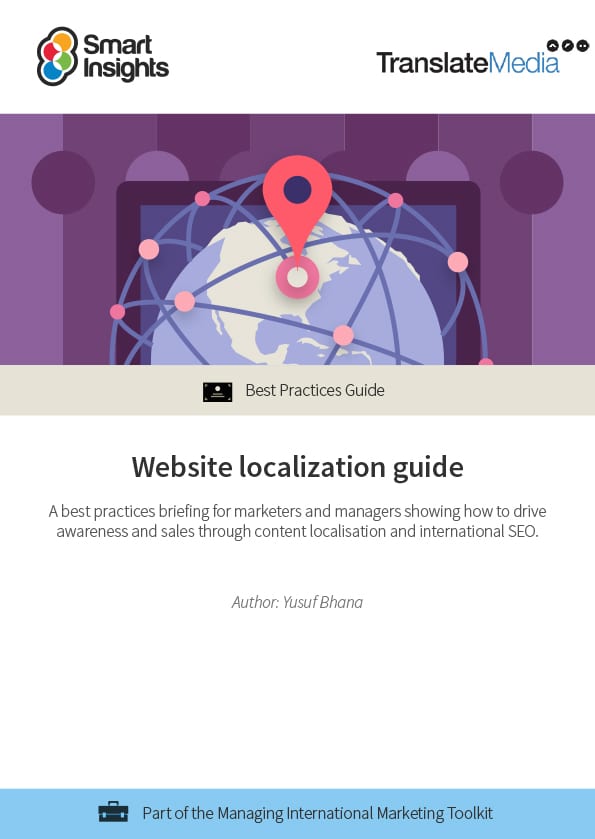Website localization guide
A best practices briefing for marketers and managers showing how to drive awareness and sales through content localisation and international SEO
If your website is going to deliver maximum relevance to an international audience and get the best results for your business, you will need to localise it. Translating its content and changing its style and communications to meet cultural differences will make it more effective in meeting the varying tastes and expectations of local audiences in different countries.
Translation of marketing content is a major activity in its own right, however much more is involved. Localisation also involves accounting for the cultural nuances and functional expectations of the target region when designing the site, layout and structure, as well as the content. It also involves technical issues of hosting content on the best domains and with the right language markup to maximise SEO.
Who is this guide for?
The guide is aimed at marketers responsible for increasing the business contribution of companies and brands using customer-facing websites for different international markets.
It’s intended to highlight the main success factors for improvements to be reviewed when implementing projects with specialist agencies, consultants and in-house search, content and user experience specialists.
It will be particularly useful for defining key requirements and issues to discuss when starting a localisation project for a country.
Roles in a team that will find the guide useful include:
- Marketing directors and managers
- Digital marketing and Ecommerce managers (both those in a central global team and local country or region managers)
- Country website managers
- Content and editorial managers
- Products and brand managers
Don't start a new localisation or translation project without reading and following the recommendations in this guide!
What does the guide cover?
This guide explains what website localisation is; how it works and how it can be implemented. It gives best practice advice on what to consider when building localised versions of your site as part of an international marketing campaign. The guide covers:
- An introduction to web site localisation - This includes a benchmarking template to assess your current localisation capabilities.
- Information on Domains and Hosting - What to consider when choosing domains, how to structure your URLs and options for hosting around the world to optimise performance.
- Multi-lingual content and international SEO - How to set up redirects and what to consider to boost your international SEO.
- CMS integration and localisation management - The pros and cons of machine translation, managing brand across languages and how to manage the localisation process.
Resource Details
- Author: Yusuf Bhana, TranslateMedia
- Last updated: October 2015
- Format: 20,000 word, 35 page A4 page PDF Ebook with illustrations and checklists
About the author
Yusuf Bhana
 Yusuf is Head of Digital at TranslateMedia. You can follow him on Twitter or connect on LinkedIn
Yusuf is Head of Digital at TranslateMedia. You can follow him on Twitter or connect on LinkedIn

 Professional Membership is required
Professional Membership is required

 Free membership
Free membership







